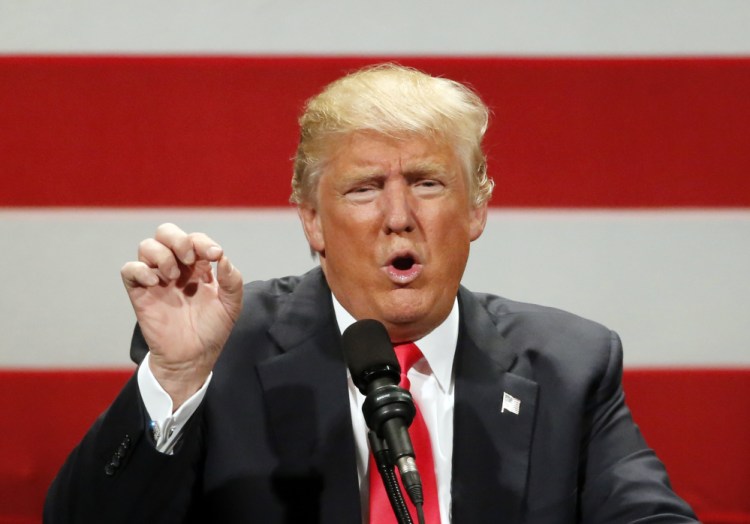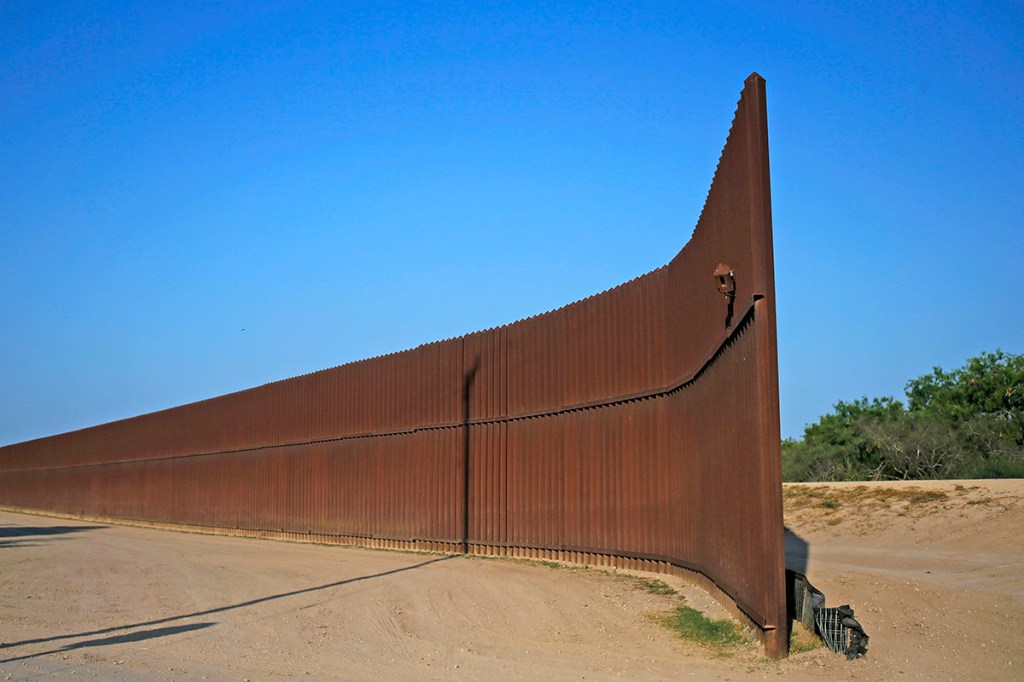WASHINGTON – Donald Trump says he will force Mexico to pay for a border wall as president by threatening to cut off the flow of billions of dollars in payments that immigrants send home to the country, an idea that could decimate the Mexican economy and set up an unprecedented showdown between the United States and a key diplomatic ally.
In a two-page memo to The Washington Post, Trump outlined for the first time how he would seek to force Mexico to pay for his 1,000-mile border fence, which Trump has made a cornerstone of his presidential campaign and which has been repeatedly scoffed at by current and former Mexican leaders.
The proposal would jeopardize a stream of cash that many economists say is vital for Mexico’s struggling economy. But the feasibility of Trump’s plan is unclear both legally and politically, and also would test the bounds of a president’s executive powers in seeking to pressure another country.
In the memo, Trump said he would threaten to change a rule under the USA Patriot Act antiterrorism law to cut off a portion of the funds sent to Mexico through money transfers, commonly known as remittances. The threat would be withdrawn if Mexico made “a one-time payment of $5-10 billion” to pay for the border wall, he wrote.
“It’s an easy decision for Mexico,” Trump said in the memo, which was written on campaign stationery emblazoned with “TRUMP Make America Great Again.”
After the wall is funded, Trump wrote, transfer payments could continue “to flow into their country year after year.” He gave the memo to The Post in response to a written question provided to him before an interview last week.
Nearly $25 billion was sent home by Mexicans living abroad in 2015, mostly in the form of money transfers, according to the Mexican central bank. In his memo, Trump said that “the majority of that amount comes from illegal aliens.”
But that figure includes cash from around the world, not just the United States. In addition, a Government Accountability Office report in January said that it is difficult to track how much money illegal Mexican immigrants are sending versus those working legally in the United States.
Throughout the campaign, Trump has claimed that he could build his proposed U.S.-Mexico barrier for about $8 billion – a figure that numerous experts have described as dubious because of the costs and other obstacles to building a lengthy, impenetrable concrete barrier through numerous jurisdictions.
The odds of success for Trump’s proposal to pay for such a wall also are fraught with challenges. Although there is a shortcut in the Administrative Procedure Act that allows for “interim” regulations that take effect immediately without going through the regular public notice and comment process, there are limitations on that authority.
Based on the process for changes laid out in the Federal Register, Trump as president could potentially invoke a change by making the argument that illegal immigration is an emergency that must be addressed immediately or is a threat to public health or safety.
But such a rule would presumably apply to limiting wire transfers, canceling visas or raising visa fees – not about directly limiting immigration. That could make it harder for Trump to argue that any of those criteria meet the exceptions, according to some experts.
After reviewing Trump’s proposal, one expert on immigration law said he is skeptical.
“Trump is giving an extremely broad definition of this section of the Patriot Act and what it allows, and it’d surely be litigated,” said Stuart Anderson, executive director of the National Foundation for American Policy, a nonpartisan think tank in Virginia. “It would be a large expansion beyond what the text reads.”
Anderson said Trump’s memo also leaves unaddressed how normal financial transactions across borders would be affected and whether there would be an overly aggressive federal intrusion into the growing number of financial transactions that take place over the Internet.
Entitled “Compelling Mexico to Pay for the Wall,” the memo is the latest attempt by the Republican presidential front-runner to offer more specifics about his proposal at a time when he faces tough head winds, including a potential loss Tuesday to Sen. Ted Cruz of Texas in Wisconsin’s Republican primary.
The memo includes rationales for a number of potential intimidation tactics, including increased trade tariffs, the cancellation of visas, and higher fees for border-crossing cards.
But at the core of Trump’s approach is a focus on the remittances of illegal immigrants, which he argues are crucial to Mexican economic stability and are a way of pressuring the country to disburse billions of dollars to the United States to fund construction of his wall.
Trump’s official immigration plan, released last year, featured a pledge to “impound all remittance payments from illegal wages” and to hike fees on temporary visas, among other actions, but it did not go into further detail.
The playbook outlined in Trump’s memo echoes suggestions that have long been made by Sen. Jeff Sessions of Alabama, a key Trump ally and a hard-line voice on immigration policy within the Republican Party. Stephen Miller, a former top aide to Sessions, is Trump’s policy adviser.
Starting on “day 1,” Trump writes, he would issue a warning to Mexico that unless it pays his desired amount, he will promulgate a new federal provision that would lead to a sweeping confiscation of funds sent by Mexicans in the United States who lack documentation of their “lawful presence.”
On “day 2,” Trump continued, “Mexico would immediately protest.” But he would declare that Mexico must choose between the enforcement of his provision or acquiescing.
To explain how he would have the standing to pursue his aggressive strategy, Trump begins by citing a provision in the Code of Federal Regulations that sets the standards for financial institutions in identifying their customers.
That provision, Trump says, makes it possible for the executive branch to “issue detailed regulations on the subject.” He predicted that Mexico would react by initially balking, then doing what he wants.
Trump writes that “if the Mexican government will contribute $–– billion to the United States to pay for the wall, the Trump Administration will not promulgate the final rule, and the regulation will not go into effect.”
Many academics and economists have said that Trump’s notion of impounding remittances could have devastating consequences, harming poor communities and families who rely on funds from abroad to provide food and shelter.
Other aspects of Trump’s plan include”trade tariffs, or enforcement of existing trade rules,” “cancelling visas” and “visa fees.” Trump leaves open the option of using those methods to coerce Mexico.
“Our approvals of hundreds of thousands of visas every year is one of our greatest leverage points,” Trump writes. “We also have leverage through business and tourist visas for important people in the Mexican economy.”
Trump ends with a scathing critique of Mexico, claiming that it has “taken advantage” of the United States for years through “gangs, drug traffickers and cartels” responsible for “the extraordinary daily cost of this criminal activity.”
“We have the moral high ground here, and all the leverage,” Trump concludes.
Send questions/comments to the editors.



